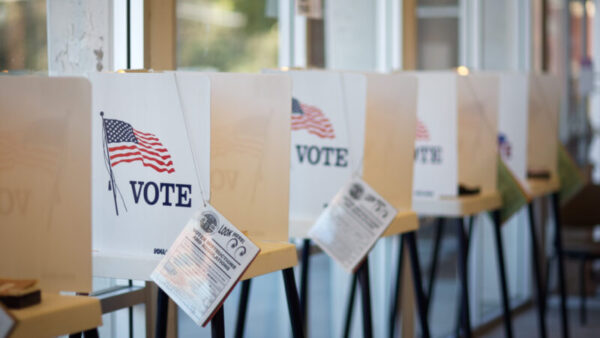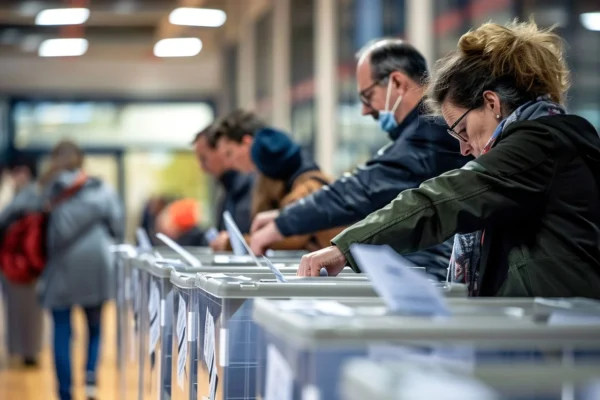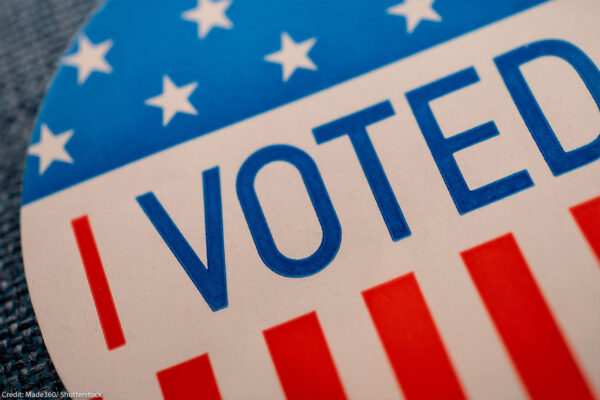
Hans von Spakovsky, in his recent article in the National Review, “Strike Down Section 5,” gets it wrong when he says the Supreme Court should hold Section 5 of the Voting Rights Act unconstitutional in the case now pending before it, Shelby County, Alabama v. Holder. The South, as a direct result of the Voting Rights Act, has changed, but that does not mean we no longer need Section 5, which requires nine states and parts of seven others with the worst and continuing histories of discrimination in voting to preclear their proposed changes in voting and show that they do not have a discriminatory purpose or effect.
In reaching its decision, Congress relied upon more than 750 Section 5 objections by the Department of Justice that blocked the implementation of some 2,400 discriminatory voting changes; the withdrawal or modification of over 800 potentially discriminatory voting changes after DOJ requested more information; 105 successful actions to require covered jurisdictions to comply with Section 5; 25 denials of Section 5 preclearance by federal courts; some 800 successful cases to enforce Section 2 of the Act, a permanent, nationwide provision which protects the equal right of minorities to participate in the political process and elect representatives of their choice; racially polarized voting in the jurisdictions covered by Section 5; and tens of thousands of federal observers dispatched to monitor elections in covered jurisdictions.
Von Spakovsky, responding to Rep. John Lewis’ Washington Post op-ed says “there is no evidence” to support Rep. John Lewis’ claim that many of the covered jurisdictions, including Alabama, have “persistent, flagrant, contemporary records of discrimination.” To the contrary, the evidence before Congress showed that the covered jurisdictions, including Alabama and Shelby County, continue to be among the worst acting covered jurisdictions. Since its reauthorization in 1982, Section 5 objections prevented 46 discriminatory voting laws in Alabama from going into effect, seven from the state and 39 from local jurisdictions. And many of the objections were based upon purposeful discrimination. One of the objections in 2008 prevented the City of Calera, one of the jurisdictions in Shelby County, from eliminating the sole majority black district used for city elections.
There were also 22 successful actions filed in Alabama to require covered jurisdictions to comply with Section 5. These enforcement actions blocked implementation of an array of devices that would have diluted minority voting strength.
Another 192 discriminatory voting practices in Alabama were successfully challenged in lawsuits under Section 2 of the Act. There were in fact more successful Section 2 cases in Alabama than in all the non-covered jurisdictions combined.
Although blacks are over a quarter of the state’s population, because of continuing racially polarized voting, Alabama has no black statewide elected officials, and nearly all black officials are elected from majority black districts. That discrimination in Alabama persists to the present day is further evident from a 2011 decision of a federal court which found “compelling evidence that political exclusion through racism remains a real and enduring problem in [Alabama,]” and is “entrenched in the high echelons of state government.”
Von Spakovsky further argues that Section 5 is not needed because “[t]here is nothing that prevents anyone, black or white, from registering and voting.” First, he ignores the fact that many covered jurisdictions have recently adopted voting practices that make it much more difficult for minorities to register and vote, and in some instances prevent them from voting, such as burdensome photo ID laws for in-person voting, reducing the days for early voting, and imposing severe limitations and fines on third party voter registration activities. Second, Section 5 protects not only the right to register and vote but the right not to have the vote diluted by practices such as at-large elections, discriminatory redistricting plans, closing precincts in areas with substantial minority populations, racially selective annexations, harassment and intimidation of black voters, voter purges, etc.
Section 2 is not, as von Spakovsky contends, an adequate remedy for existing discrimination. It is time consuming, extremely work-intensive, very expensive, places the burden of proof on the victims of discrimination rather than its perpetrators, and cannot prevent enactment of discriminatory voting measures. As Congress concluded, the failure to reauthorize Section 5 “would leave minority citizens with the inadequate remedy of a Section 2 action.”
Von Spakovsky is also mistaken in claiming a three-judge federal court held DOJ “was wrong” in objecting to South Carolina’s 2011 photo ID law. In fact, the court precleared the law but only after the state agreed to modify it to allow citizens to vote “without a photo ID.” What the court precleared was fundamentally different from what DOJ had objected to. As one of the judges concluded: “The Section 5 process here . . . demonstrates the continuing utility of Section 5 of the Voting Rights Act in deterring problematic, and hence encouraging non-discriminatory, changes in state and local voting laws.”
Von Spakovsky takes issue with Rep. Lewis’ claim that the costs of complying with Section 5 are minimal. But as Mississippi, California, New York, and North Carolina, which are covered in whole or in part by Section 5, explained in detail in an amicus brief they filed in the Shelby County case in support of the constitutionality of Section 5, “its compliance burdens are minimal.” South Carolina may have spent a considerable amount of money in the law suit it filed seeking judicial preclearance of its photo ID law, but its subsequent decision to remove the photo ID requirement shows the litigation, and the costs incurred, were totally unnecessary. After conducting 21 hearings from more than 90 witnesses, and compiling a massive legislative record of more than 15,000 pages, Congress concluded in 2006 by a nearly unanimous vote (98 to 0 in the Senate and 390 to 33 in the House) that Section 5 was still needed.
The Supreme Court has upheld the constitutionality of Section 5 in four prior decisions. The Fourteenth and Fifteenth Amendments give Congress, not the courts, the power to enforce the provisions by appropriate legislation. And when Congress acts to enforce prohibitions against racial discrimination in voting it acts at the height of it powers. The Supreme Court, which is required to give substantial deference to the considered judgment of Congress, should uphold Section 5.
Check out A History of The Voting Rights Act timeline.
Learn more about The Voting Rights Act and other civil liberties issues: Sign up for breaking news alerts, follow us on Twitter, and like us on Facebook.



